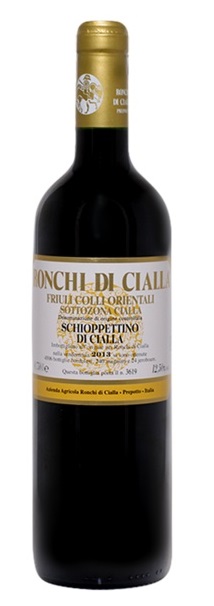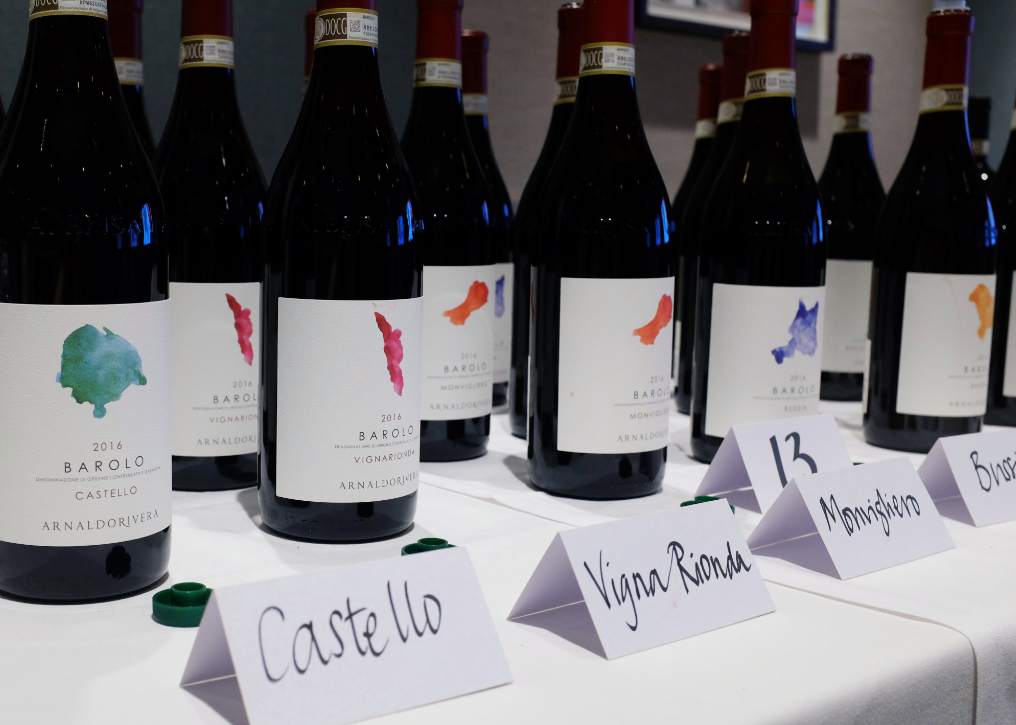2017 Schioppettino di Cialla, Ronchi di Cialla
The 'liquid magic' is back
£175 per 6 bottle case in bond
This offer of the 2017 Schioppettino from Ronchi di Cialla is likely to be well-received as I have had numerous really positive comments from those who purchased the outstanding 2015. Schioppettino is a tricky variety to cultivate, it is a big berry with thin skins, so tannins are low as is colour. It prefers cooler vintages and can struggle in hotter ones, but, when conditions are favourable, it can really deliver great quality and a truly unique style. I did not offer the 2016, as I found it to lack a little substance, so I was delighted to see that the 2017 marks a serious return to form.
Background:
Ian d’Agata once commented that ‘Friuli Venezia Giulia’s Schioppettino is one of the world’s most interesting and potentially great red grape varieties.’ High praise indeed for an obscure grape variety, though Schioppettino’s roots stretch back to the 13th century, when it was associated with the communes of Prepotto and Albana to the east of Friuli-Venezia Giulia, some 50km northeast of Venice. Today it is still grown here and over the border it shares with Slovenia, but very little of it remains. By the 1970s, not one estate was making a varietal Schioppettino, until the Rapuzzi family of Ronchi di Cialla took up the challenge after being encouraged by Italian wine journalist Luigi Veronelli. Today, other producers exist, all encouraged by the success that they have witnessed at Ronchi di Cialla.
When the Rapuzzis founded Ronchi di Cialla (ronchi meaning cultivated hillside in Italian and cialla derived from the Slovenian word cela, meaning stream), Schioppettino was not even authorised for cultivation by the Ministry of Agriculture. After a lengthy period of lobbying to get Schioppettino recognised, including founding an awards ceremony to champion the uniqueness of Friuli, in which the Rapuzzis won favour, Schioppettino was finally authorised and Ronchi di Cialla’s first official vintage was the 1977. This is very much the abridged version and if you are interested in reading more, Ian d’Agata wrote a great article on this estate for vinous.com in June 2017 that is hugely informative. I won’t get into to an analysis of Italian Wine Law, but it is remarkable to think that planting and cultivating Schioppettino, an indigenous variety that had been cultivated here since the 13th century, was at any point illegal! When the Rapuzzis planted vines at Cialla they were effectively breaking the law. If you think the struggle with the authorities sounds like a nightmare, consider that Friuli was devastated by an earthquake in 1976, which destroyed the cellar at Ronchi di Cialla forcing the Rapuzzi family to pick themselves up and start over once more…
Today, all of these trials and tribulations are behind them – the estate is well-established and extends over 28 hectares, eight of which are planted with Schioppettino, largely on marl soils. In fact, Ronchi di Cialla is the reference point for the variety and is one of only two estates in Italy that are recognised as DOCs or appellations in their own right – the other being Sassicaia. Two different qualities of Schioppettino are made, with the Schioppettino di Cialla offered here representing their top bottling and most ageworthy wine. Indeed, the Rapuzzis hold back stock to mature it in their own cellars for later release, so this estate has extensive library stock by Italian standards. The fruit for the top bottling sees around 20 to 25 days of maceration (skins in contact with juice) and this is edged back for the entry level offering, labelled Ribolla Nera. Ageing for the ‘Cialla’ cuvee takes place in French oak barriques, with just 10% new oak in order not to overshadow the fruit. It is aged for 14-18 months in barrique before bottling, depending on the vintage, and is then aged for a further 30-36 months in bottle before release – nothing is hurried. As mentioned above, Schioppettino prefers cooler microclimates and can struggle in hot vintages as it has relatively thin skins – Pierpaolo Rapuzzi compares it to a white variety in terms of its demands and harvest is invariably in the latter half of October.
My note:
I find this such a fascinating wine. The 2017 is bright, by no means opaque in the glass, with notes of blueberry and cherry, with floral notes as well as a savoury nuance. It broadens out with air. On the palate, the first thing you recognise is the sleek texture with no harsh edges. It is a fragrant, light to medium-bodied wine with modest alcohol and underscored by a vibrant acidity, so it seems odd to find roundness. It is effortless – nothing forced, I love the zesty touch that the fruit picks up to the finish, which leads to a spicy, peppercorn note that adds a very distinctive complexity to those wild hedgerow fruit characters. You could easily be forgiven for thinking this wine will not age long term, but it is so perfectly balanced with a harmony between components that it will surprise you. I know nothing like it – a very individual wine indeed. I think Ian d’Agata says it best; ‘in the right hands Schioppettino is able to weave an uncanny amount of liquid magic’.

£175 per 6 bottle case in bond
Please see Eric Guido’s note from Vinous below.
93 points, Eric Guido, vinous.com
The 2017 Schioppettino di Cialla is wildly spicy and fresh, with an intense burst of peppery rose and smokey raspberry offset by a dusting of savory spice. This is silky-smooth and sapid with masses of mineral-tinged dark red fruits offset by zesty acidity. It finishes potent with a staining of primary concentration and a coating of sweet tannins. What a beauty, and with the potential for a very long life. In 2017, Ronchi di Cialla lost 30% of their production due to frost at the end of April. 2025- 2040.
Please let us know of your interest.
Best wishes,
Simon



